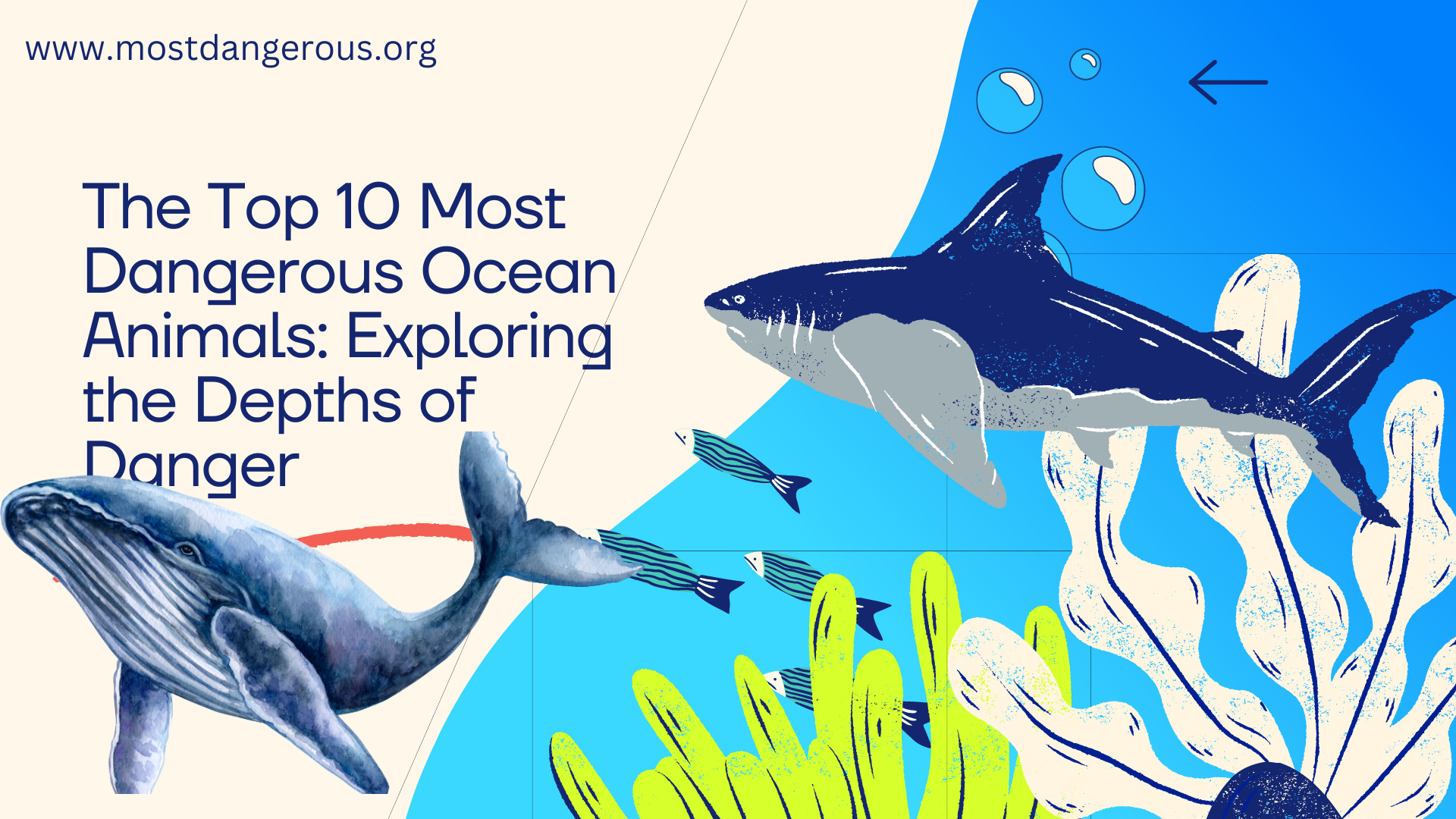The ocean is a vast and mysterious realm, but it also contains some of the most lethal creatures on Earth. The top 10 most dangerous ocean animals include the Great White Shark, the Box Jellyfish, the Saltwater Crocodile, the Blue-Ringed Octopus, the Stonefish, the Portuguese Man o’ War, the Tiger Shark, the Saltwater Stonefish, the Blue Shark, and the Crocodile Fish. These creatures have unique adaptations, such as razor-sharp teeth, venomous stingers, and a deadly reputation.
oceans dangerous animals1. The Great White Shark: Apex Predator of the Deep
With its powerful jaws and serrated teeth, the great white shark is the stuff of nightmares. These massive predators can reach lengths of up to 20 feet and weigh over 5,000 pounds. Their lightning-fast attacks on seals and sea lions have earned them a fearsome reputation. Despite their rarity, encounters with great whites can be deadly for humans.
2. The Box Jellyfish: A Transparent Killer
Don’t be fooled by its delicate appearance—the box jellyfish is one of the deadliest creatures in the ocean. Its tentacles are covered in tiny, venomous darts that can cause excruciating pain, heart failure, and even death. Found primarily in the waters of Australia and Southeast Asia, encounters with box jellyfish require immediate medical attention.
3. The Saltwater Crocodile: Ancient Predator
The saltwater crocodile, also known as the “salty,” is the largest living reptile. These prehistoric beasts can grow up to 23 feet long and weigh over a ton. Their ambush-style attacks on unsuspecting prey—including humans—make them a true menace in estuaries and coastal waters.
4. The Blue-Ringed Octopus: Tiny But Deadly
Small in size but big on lethality, the blue-ringed octopus packs a potent punch. Its vibrant blue rings serve as a warning: their venom can cause paralysis and respiratory failure within minutes. Found in the waters of the Indo-Pacific, these elusive creatures are best admired from a safe distance.
5. The Stonefish: Master of Camouflage
Hidden among rocks and coral, the stonefish is a master of disguise. Its spines contain a powerful toxin that causes intense pain, swelling, and tissue damage. Stepping on a stonefish can lead to a medical emergency, so watch your step when exploring the ocean floor.
6. The Portuguese Man o’ War: Floating Terror
Resembling a translucent balloon, the Portuguese man o’ war is not a single organism but a colony of specialized creatures. Its long tentacles deliver a painful sting that can cause welts and even allergic reactions. Spotting these eerie creatures from a distance is crucial to avoiding their venomous embrace.
7. The Tiger Shark: Opportunistic Hunter
Tiger sharks are notorious scavengers, devouring anything from sea turtles to license plates. Their serrated teeth can crush bone, and their curiosity often leads to accidental encounters with humans. While not as aggressive as great whites, tiger sharks still pose a significant risk.
8. The Saltwater Stonefish: A Camouflaged Assassin
Similar in name but distinct from the stonefish, the saltwater stonefish is equally dangerous. Its venom causes excruciating pain and can be fatal if left untreated. Found in the Indian and Pacific Oceans, these masters of camouflage blend seamlessly with their surroundings.
9. The Blue Shark: Swift and Silent
Blue sharks are sleek and agile, patrolling the open ocean in search of prey. While they rarely target humans intentionally, accidental bites can occur during fishing activities. Their sharp teeth and powerful jaws make them a force to be reckoned with.
10. The Crocodile Fish: A Venomous Ambusher
The crocodile fish lies in wait, blending into the seabed with its mottled appearance. Its spines deliver a painful toxin that causes swelling and nausea. Found in the Indo-Pacific, this cryptic predator is a reminder that danger lurks beneath the waves.
Remember, whether you’re a diver, swimmer, or beachgoer, respecting these dangerous ocean animals and their habitats is essential for our safety and the preservation of marine ecosystems.
